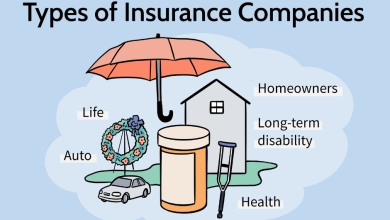Insurance Essentials for Drivers: Navigating Auto Coverage Options in the United States

Introduction:
Insurance plays a vital role in the lives of drivers across the United States, offering essential protection against unforeseen accidents and liabilities on the road. With a myriad of coverage options and state-specific regulations, understanding auto insurance is paramount for drivers seeking comprehensive coverage and financial security. This article serves as a comprehensive guide to insurance essentials for drivers, providing insights into different types of coverage, factors influencing premiums, and strategies for optimizing coverage while managing costs.
Types of Auto Insurance Coverage:
Auto insurance policies encompass various types of coverage, each tailored to protect drivers, passengers, and vehicles from different risks and liabilities. Understanding the following types of coverage is crucial for drivers seeking adequate protection:
- Liability Insurance: Liability insurance is mandatory in most states and covers damages to other people’s property or injuries they sustain in an accident for which the insured driver is at fault. It typically includes bodily injury liability coverage, which pays for medical expenses, lost wages, and legal fees, and property damage liability coverage, which covers repair costs or replacement of damaged property.
- Collision Insurance: Collision insurance provides coverage for damage to the insured vehicle resulting from a collision with another vehicle or object, regardless of fault. This coverage helps pay for repair or replacement costs for the insured vehicle, minus the deductible chosen by the policyholder.
- Comprehensive Insurance: Comprehensive insurance offers coverage for damage to the insured vehicle caused by non-collision incidents such as theft, vandalism, natural disasters, falling objects, and animal collisions. It provides financial protection for repairs or replacement of the vehicle, subject to the chosen deductible.
- Uninsured/Underinsured Motorist Insurance: Uninsured/underinsured motorist (UM/UIM) insurance protects drivers and passengers in the insured vehicle in the event of an accident caused by a driver who either has no insurance or insufficient insurance coverage to pay for damages and injuries. UM/UIM coverage helps cover medical expenses, lost wages, and other damages not covered by the at-fault driver’s insurance.
- Personal Injury Protection (PIP) Insurance: PIP insurance, also known as “no-fault” insurance, is required in some states and provides coverage for medical expenses, lost wages, and other costs incurred by the insured driver and passengers regardless of who is at fault in an accident. PIP coverage typically includes benefits for medical expenses, rehabilitation costs, funeral expenses, and lost income.
Factors Influencing Auto Insurance Premiums:
Several factors influence auto insurance premiums, and understanding these factors can help drivers make informed decisions and potentially lower their insurance costs. Key factors include:
- Driving Record: A driver’s history of accidents, traffic violations, and claims can significantly impact insurance premiums, with safer drivers generally qualifying for lower rates.
- Vehicle Type: The make, model, year, and value of the insured vehicle can affect insurance premiums, with newer, more expensive vehicles typically commanding higher premiums.
- Coverage Limits and Deductibles: The amount of coverage selected and the deductible chosen by the policyholder can impact insurance premiums, with higher coverage limits and lower deductibles resulting in higher premiums.
- Location: The geographic location where the insured vehicle is primarily driven and parked can influence insurance premiums, with urban areas and regions prone to high rates of accidents or theft typically associated with higher premiums.
- Age, Gender, and Marital Status: Factors such as age, gender, and marital status can impact insurance premiums, with younger drivers, male drivers, and unmarried drivers often facing higher rates due to statistical risk factors.
Strategies for Optimizing Auto Insurance Coverage:
While auto insurance is essential for protecting drivers and vehicles on the road, there are several strategies drivers can employ to optimize coverage and manage costs:
- Compare Quotes: Shopping around and comparing quotes from multiple insurance companies can help drivers find the best coverage options at competitive rates.
- Bundle Policies: Bundling auto insurance with other insurance policies such as homeowners or renters insurance can often result in discounts from insurance companies.
- Maintain a Clean Driving Record: Avoiding accidents, traffic violations, and claims can help drivers qualify for lower insurance premiums over time.
- Consider Higher Deductibles: Choosing higher deductibles can lower insurance premiums, but drivers should ensure they can afford the out-of-pocket costs in the event of a claim.
- Take Advantage of Discounts: Many insurance companies offer discounts for factors such as safe driving habits, completion of defensive driving courses, installation of anti-theft devices, and membership in certain organizations or affiliations.
Conclusion:
Auto insurance is a fundamental aspect of responsible vehicle ownership in the United States, offering essential protection against accidents, liabilities, and unexpected events on the road. By understanding the types of coverage available, factors influencing premiums, and strategies for optimizing coverage, drivers can make informed decisions to protect themselves, their passengers, and their vehicles while managing insurance costs effectively. Whether it’s liability insurance, collision coverage, or comprehensive protection, having the right auto insurance policy in place provides peace of mind and financial security for drivers across the nation




